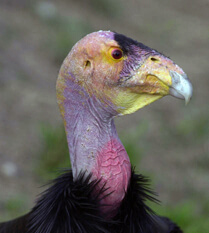Three California Condors Die from Lead Poisoning
 |
California Condor, Photo: ©FWS |
(Washington, D.C.,
In 1982 only 22 California Condors remained on Earth. They were all captured and made part of a breeding program in the 1980s undertaken by a coalition of federal and private wildlife conservation organizations as part of the Condor Recovery Program. As a result of that effort, there are now about 350 California condors in existence, approximately half in captivity and the other half in the wild in release programs in California and Arizona.
The three dead birds had been outfitted with satellite tracking equipment that allowed biologists to monitor their movements. The transmitters showed that the two adult birds had been foraging in Utah outside of the local release area in Northern Arizona. Tracking data suggest that the adult birds likely ingested the lead in Utah. Conservation partners in the Recovery Program continue to work with hunters in an attempt to reduce the amount of spent lead ammunition that threatens condors scavenging on gut piles and carcasses left in the field.
The State of California requires hunters to use lead-free ammunition in historic condor areas. The Arizona Game and Fish Department started a non-lead ammunition program in 2003. Surveys show that 85 percent of hunters took measures in 2009 to reduce the amount of available spent lead in the condor’s core range. The Utah Division of Wildlife Resources is implementing a similar program for hunters on the Zion unit in southwestern Utah.
“Reducing the use of lead ammunition, at least in the condor’s ranging area, has got to remain a priority. Education outreach to the hunting community has been working well in Arizona and that success needs to be duplicated in Utah. It is a major key to protecting one of the rarest and most spectacular birds on the planet,” said Dr. Michael Fry, Director of Conservation Advocacy for American Bird Conservancy.


















































